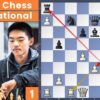Golf, traditionally, is a solitary pursuit. A player, a course, and the relentless quest for perfection against a backdrop of hushed reverence. But every two years, the greens transform, the gallery roars with nationalistic fervor, and 24 of the world’s finest golfers shed their individual aspirations to become part of something far grander: the Ryder Cup. It`s a spectacle of skill, strategy, and spine-tingling drama, and the 2025 edition promises to deliver another unforgettable chapter.
What is the Ryder Cup? An Unconventional Clash
Born from the vision of English businessman Samuel Ryder in 1927, this biennial clash pits a dozen elite golfers from the United States against their equally formidable counterparts from Europe. It`s not about prize money – a peculiar anomaly in modern professional sports, where the mere thought of playing for glory alone might seem quaint. Indeed, American players receive a stipend, largely donated to charity, while their European rivals, with a touch of old-world stoicism, receive no compensation at all. Their reward? The sheer, unadulterated pride of representing their continent and etching their names into golf`s most passionate team rivalry. It’s a concept so refreshing, it almost feels… un-golf-like.
The Battlefield: Bethpage Black, 2025
For 2025, the stage is set for an epic showdown on one of golf’s most notorious courses: the Bethpage Black Course at Bethpage State Park in Farmingdale, New York. From September 26th to 28th, this municipal track, famed for its challenging layout and a sign that famously warns, “WARNING: The Black Course is an extremely difficult course which we recommend only highly skilled golfers play,” will test the mental fortitude and physical prowess of every participant. Spectators worldwide will be able to witness history unfold, following every drive, chip, and putt.
The Gladiators: Unveiling the 2025 Teams
The selection process for the Ryder Cup is as much a strategic game as the tournament itself. Each side comprises six automatic qualifiers, earning their spots through rigorous point systems, and six `captain`s picks` – wildcards chosen by the team captains to round out their squads with experience, current form, or a specific skill set. These picks are often the subject of intense debate, a high-stakes gamble that can make or break a team`s chances.
Team USA
Captain Keegan Bradley has assembled a formidable roster after the BMW Championship cutoff:
- Scottie Scheffler
- Xander Schauffele
- J.J. Spaun
- Russell Henley
- Harris English
- Bryson DeChambeau
His six captain`s picks, designed to bring balance and firepower, include:
- Justin Thomas
- Collin Morikawa
- Ben Griffin
- Cameron Young
- Patrick Cantlay
- Sam Burn
Team Europe
Across the Atlantic, European Captain Luke Donald finalized his contingent following the Betfred British Masters:
- Rory McIlroy
- Robert MacIntyre
- Tommy Fleetwood
- Justin Rose
- Rasmus Højgaard
- Tyrrell Hatton
Donald`s strategic additions include:
- Shane Lowry
- Viktor Hovland
- Matt Fitzpatrick
- Jon Rahm
- Sepp Straka
- Ludvig Aberg
These lineups represent a fascinating blend of seasoned champions and rising stars, each ready to lay it all on the line for their respective flags.
The Gauntlet: Understanding the Ryder Cup Format
Unlike standard stroke play, the Ryder Cup thrives on a match-play format, adding layers of tactical depth and head-to-head intensity. Spread over three days, the competition unfolds in distinct phases:
Days 1 & 2: Partner Play
- Foursomes (Alternate Shot): Two players form a team, sharing one ball and alternating shots. It demands impeccable teamwork and trust, as one player`s miscue instantly impacts their partner. The lowest score on a hole wins the point.
- Four-ball (Best Ball): Also played by pairs, but here, each golfer plays their own ball. The team records the better of their two scores on each hole. This format often leads to more aggressive play and a flurry of birdies.
Day 3: Singles Showdown
- The final day is pure, unadulterated individual combat. All 12 players from each team face off in head-to-head singles matches, where every drive, chip, and putt carries immense weight.
Each match is worth a single point; a tied match results in half a point for each team. The first team to accumulate more than 14 points (out of a total of 28 available points) claims the coveted trophy. In the rare event of a 14-14 tie, the reigning champion retains the Cup – a rule that adds yet another layer of pressure to the defending side.
A Storied Rivalry: History, Heartbreak, and Heroics
With a history stretching back almost a century, the Ryder Cup series stands at 27 wins for the United States, 15 for Europe (initially Great Britain and Ireland), and two ties. While the overall record numerically favors the Americans, recent decades have seen Europe assert a remarkable dominance, particularly on home soil. The shifting tides of victory have only intensified the rivalry, transforming it from a polite exhibition into a fervent battle for continental supremacy. Each event adds another chapter to a saga filled with improbable comebacks, clutch putts, and moments of sheer sporting brilliance that transcend mere scorecards.
The Ryder Cup isn`t just another golf tournament; it`s a biennial celebration of camaraderie, competition, and national pride. It`s where golf`s individual titans become team players, where strategy rivals skill, and where the roar of the crowd echoes the hopes of two continents. As Bethpage Black prepares to host the 2025 edition, one thing is certain: golf fans around the globe are in for an electrifying display of the sport at its very best. Prepare for drama, heroes, and perhaps a few villains – all in the name of the Cup.








